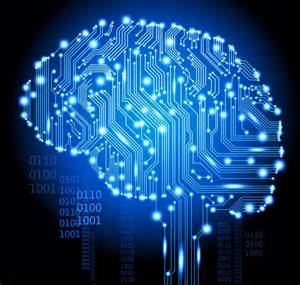Can Socially Intelligent Machines Replace the Power of Human Touch?
Will a Machine Replace the Nurse?
Can socially intelligent machines replace the power of the human touch? Absolutely not! I do not see a robot giving back rubs at night to patients that can’t sleep or robots providing comfort care to a dying patient and their family. McGonigle and Mastrian (2009) mention that artificial intelligence “attempts to capture the complex processes of human thought and intelligence” (p. 58). The key word here is attempts. A machine may be perceived to have feelings, but one must remember that it is a program developed by a human.
Socially intelligent machines do and will have a place beside nurses in health care. I do not believe the profession will go as far as to physically replace nurses providing direct patient care, but will utilize the machines to supplement and facilitate care through support, feedback, and education. Improvements in the human-technology interface have already led to significant improvements in health care, namely anesthesiology (McGonigle & Mastrian, 2009, p. 72).
Using Machines with Emotional Intelligence
The technological advances of machines will continue to assist humans in making tasks easier and faster. Emotionally intelligent machines can assist with education initiatives by improving learning outcomes in early childhood education (Breazeal, 2008). The robots have even been studied during health promotion and disease prevention initiatives. During a weight management study, robots provided social support, managed devices, and empowered the subjects’ social networks (Breazeal, 2008). The robots in the study also established a physician-patient relationship through sensitive cues, team building dialogue, and use of a relationship model to adjust dialogue (Breazeal, 2008).

Uses of Socially Intelligent Machines
There is potential to increase the accessibility of health care by using socially intelligent machines. Patients living in rural areas or those with mobility issues may develop a social connection with their machines. Breazeal (2008) mentioned in a weight management study, patients were more likely to interact with their robot, rather than a computer or paper intervention. The social interaction increased program success and could be used to intervene with rural issues such as loneliness (Breazeal, 2008).
The collaboration between machine and nursing could impact hospital care, which is the environment I currently work in. Integrating socially intelligent machines with already established human-technology interfaces such as telehealth could increase positive outcomes and decrease hospital readmissions. With readmissions being an indicator for Medicare reimbursement, hospitals could increase compliance by aligning with the technology.
Systemwide intensive care units (eICUs) are also a telehealth technology currently being used in some hospitals. Combining eICU technology with socially intelligent machines could further this endeavor. McGonigle and Mastrian mention “sometimes telehealth interfaces allow patients to interact with a virtual physician (actually a computer program) that will ask questions, provide social support, and tailor education to identify patient needs based on answers to screening questions” (p. 63). Some patients have preferred the technology to real clinicians (McGonigle & Mastrian, 2009, p. 63).
What Do You Think?
How Would You Describe a Future Involving Socially Intelligent Machines?
Using Socially Intelligent Machines to Learn About Ourselves
What can we learn about ourselves? Studies being conducted between humans, robots, and computers continue to give data about human emotional interaction (Breazeal, 2008). As we learn more about ourselves, we can develop or confirm methods, theories, and processes that will advance the human race. McGonigle and Mastrian (2009) states “computing and informatics theories can be applied to help understand the information processing of the brain, and cognitive and neurological sciences can likewise be applied to build better and more efficient computer processing systems” (p. 57). Nursing is not the only field utilizing technology to advance, but it can play an important part in embracing technology to improve human life.
Personal Robots
Will the Use of Artificially Intelligent Machines Decrease Healthcare Costs?
Health care costs are continuing to rise. Will the use of artificial intelligence and machines decrease this cost? At my current workplace, the utilization of new technology has drastically increased costs due to the purchase of the technology, maintenance, increasing IT support people, and increasing the equipment needed to support the technology. When the hospital went live with medication scanning, it required the purchase of over 100 new mobile computers. Does this cost outweigh hiring employees that utilize health insurance and retirement plans? Many new technologies do assist us to decrease error and increase positive outcomes, but I am unsure of the actual cost benefit.

References
Breazeal, C. (2008). Personal Robots [Video lecture]. Retrieved from http://mitworld.mit.edu/video/602
McGonigle, D. & Mastrian, K. (2009). Nursing informatics and the foundation of knowledge. Sudbury, MA: Jones and Bartlett.








